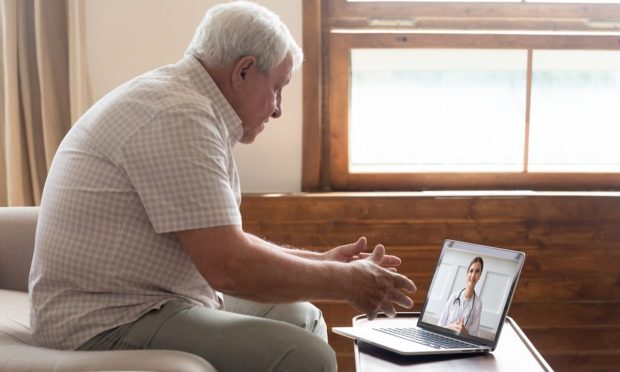Aging-in-Place Boom Gives Rise to ‘Age Tech’ and More Connected Home Options for Seniors

What do America’s roughly 71 million Baby Boomers and 72 million millennials have in common? They’re all aging, and they’re all living longer. These facts are accelerating a digital healthcare boom that got an extra kick from COVID, and will only grow in the coming years.
With the youngest Baby Boomers now over 60 and older millennials in their early 40s, both groups are looking for care advances that improve the experience. Millennials in particular face a combination of factors that make them keenly aware of connected and digital healthcare options.
It’s the arrival of “Age Tech” that will enable the anticipated “longevity economy,” as recently foreseen by people like venture capitalist and Age Tech authority Dominic Endicott.
As CNBC Make It reported, “About 44% of older millennials born between 1981 and 1988 report having been diagnosed with at least one chronic health condition, according to a recent survey conducted by The Harris Poll on behalf of CNBC Make It among over 4,000 U.S. adults, about 830 of whom were between the ages 33 to 40.”
In addition to confronting the effects of aging, millennials are also starting to make eldercare decisions for aging Baby Boomer parents. The confluence of factors is driving digital solutions.
A desire to age at home is a key trend emerging from both demographic groups, which is undoubtedly a driver behind the launch on Tuesday (Dec. 7) of Amazon’s Alexa Together, the new subscription service designed to help caregivers and loved ones keep seniors active and reachable at home, without compromising privacy.
See also: Alexa Together Service Calls on Advances in Remote Connected Eldercare
From Devices to Dwellings
As the Age Tech movement coalesces and gathers force, Big Tech and a constellation of other companies are aligning with innovation, specifically in voice and devices built on ease of use.
Talking about Apple’s efforts in this direction, the news site The Markup reported, “In its latest iPhone operating system, iOS 15, are algorithms for determining the steadiness of a person’s gait and potential for a fall in the future. The company also released an update for its AirPods called Conversation Boost, which can be used to help the hard of hearing by increasing the volume of a conversation.”
Along with devices, attention is starting to turn to aging-in-place solutions for seniors that solve for the whole house.
In November, home remodeling retail giant Lowe’s partnered with AARP and announced “a multi-year commitment to become the leading retail destination for aging-in-place and life-change solutions through its launch of Lowe’s Livable Home. Lowe’s Livable Home will offer expertise, services and affordable products, with a range of styles and budgets to meet any ability by creating a one-stop destination for universal design options,” per a statement.
As recently reported, “Some businesses have already shown their leadership in the Age Tech market. GreatCall, a U.S. connected health service provider, and Lyft, a U.S. rideshare company, launched a transportation services project for older adults. By pressing ‘0’ on their phones and telling the operator where they need to go, older customers can order the relevant transportation.”
See also: Telemedicine for Rural and Elderly Patients Gets Bipartisan Backing in Congress
